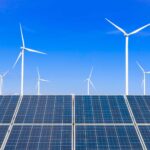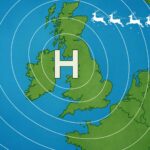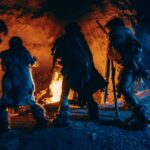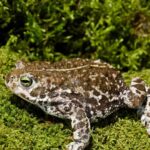
Solar storms bring stunning Northern Lights to Ireland
The Aurora Borealis were visible across parts of Ireland on Tuesday night, with sightings reported as far south as Kerry and Connemara.
Clear skies provided an ideal opportunity for stargazers in the north and west to catch a glimpse of the stellar lights display.
The above video was taken at Fort Dunree, near Buncrana on County Donegal’s Inishowen Peninsula on Tuesday night. Clips have been taken from a YouTube livestream.
Sightings of the auroras are usually confined to regions near the Antarctic and Arctic, but recent increased solar storm activity has resulted in the displays extending into the mid latitudes.
One of the most impressive displays in Ireland in recent years occurred in May 2024 when the Northern Lights were visible all over the island.
According to NOAA, the Northern Lights are most visible just after sunset or just before sunrise, with dark and cloudless skies providing the best viewing experience.
The Northern Lights from Rossaveal in Connemara 🌌 I even captured lovely reflections in the stream 📸 @AimsirTG4 @TG4TV @ThisIsGalway @visit_galway @CarlowWeather @ConnemaraIe @MetEireann pic.twitter.com/q0g3fF8YzU
— Eoin 🔴 🇮🇪 (@Eoinfah) April 16, 2025
‼️ Northern Lights NOW ‼️
— Weather Alerts Ireland ⚡️☔️ (@IrelandAlerts) April 15, 2025
This shot I took on my camera with long exposure in Kerry 😍😍#northernlights #northernlightsireland #aurora pic.twitter.com/ia8z99jBM5
While Ireland is not known as a prime location for aurora viewing, with the right conditions and location, it is possible to see the Northern Lights, especially during the months of October to April, with the best chances on the west and north coasts due to lower light pollution.
The aurora is most commonly visible between 9:00 PM and 2:00 AM.
As the most northerly point in Ireland, the Inishowen Peninsula in Donegal is a prime location for viewing the aurora.
Opportunities to see the Aurora with the naked eye are relatively rare away from northern counties.
Photography experts suggest that people should use a camera with a wide-angle lens, an F-stop or aperture of four or less, and focus set to the furthest possible setting in order to capture the Northern Lights. If using a smartphone, it is recommended to turn on night mode and disable the flash.
🚨 NASA astronaut Don Pettit captured the aurora borealis from space while aboard the International Space Station as it passed between Australia and Antarctica. The video showcases the enchanting northern lights, and in its latter part, the emergence of dawn is visible. pic.twitter.com/nnFV48K4kJ
— The Tradesman (@The_Tradesman1) April 16, 2025








